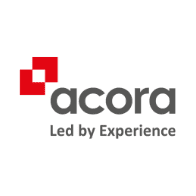Implemented by the vast majority of manufacturing firms over the past three decades, ERP solutions are viewed as essential to the operation and efficiency of the business.
Over the same period, many of the same manufacturers have adopted the principles of LEAN.
There are fundamental differences between the ERP and LEAN methodologies. In the past, as businesses became ever more focused and dependent on process automation and the digitisation of all enterprise functions, the ability to integrate LEAN principles and methodologies (that are not usually IT solutions in themselves) became a much harder proposition.
Businesses had spent large sums of money and time on shaping their ERP to their processes (and sometimes vice versa) and there was little appetite to re-engineer this environment. There was also the issue of having to change the business culture from one of almost unswerving obedience to the output of the forecast driven MRP process, to one of being driven by actual customer demand. The continuous improvement culture of LEAN, driven by the people actually doing the work, did not sit easily with many organisations.
One of the most obvious differences between lean and ERP lies in materials planning and production scheduling. ERP depends on sales forecasts (usually mixed with some degree of historical data) for materials planning. LEAN utilises pull-based production-scheduling, with inventory kept to a minimum via a Kanban system that demands and replenishes materials and parts as needed. It is the archetypical example of ’push’ vs. ’pull’ manufacturing. The LEAN principle of ‘flow’ demands that production is level loaded and balanced against customer demand, and as LEAN advocates one-piece flow (‘make one, move one’) the ability to react to changes in customer demand is greatly enhanced.
In spite of these differences it is possible to get these methodologies to work together and deliver benefit, visibility and value to the business by utilising each of these systems where its innate strength gives the most benefit. The ERP is the transaction engine – storing the orders processed, the material transactions, variances, financials, shipments etc. All of these processes and their associated outcomes are delivered without the ERP system ‘touching’ the manufacturing floor.
By selecting an ERP solution that has the ability to be configured to support LEAN processes, such as Kanban, the business is able to retain the benefit of transactional process automation and the associated generation of data that can be fed into the continuous improvement LEAN environment.
ERP solutions such as MS Dynamics NAV allow this configuration/customisation. By using industry standard tools and a proven development methodology the ERP solution can be a valuable tool in a businesses’ LEAN journey. By coupling the ERP with a visual, dynamic scheduling tool, the management of demand is improved. The information generated by the transactions processed through the ERP is vital to the correct application of LEAN tools such as Kanban calculators, Every Part Every Instance (EPEI) wheels, Plan For Every Part (PFEP) and A3 problem solving. The ability to automate processes speaks to the LEAN principal of removing waste, understanding customer demand and generating TAKT depends on order data.
All businesses have similar objectives at all levels. Be it inventory reduction, improvements in first pass yield or on time delivery. For example, neither ERP nor LEAN taken in isolation will deliver the best result.
In the battle for the enterprise, ERP and LEAN are actually allies.
BROWSE SIMILAR TOPICS
Cloud & InfrastructureASK A QUESTION
Don’t have time to call? Send your enquiry to the Acora team and we’ll get back to you quickly.

 The Acora Press Team
The Acora Press Team 
